MyPortugalHoliday.com
The best independent guide to Central Portugal
MyPortugalHoliday.com
The best independent guide to Central Portugal
Mafra, Portugal: an independent travel guide for 2026
The town of Mafra exists in the shadow of a single, colossal monument: the Palácio Nacional de Mafra. This is not merely a palace, but a combined monastery and basilica, constructed as a statement of royal ambition on a scale that is almost impossible to comprehend.
What began as King João V's solemn vow to build a modest convent for 13 friars spiralled into one of Europe's most extravagant building projects. Fuelled by the immense influx of 18th-century Brazilian gold, the palace became a complex so vast its construction nearly bankrupted the state and required a workforce of up to 25,000 men.
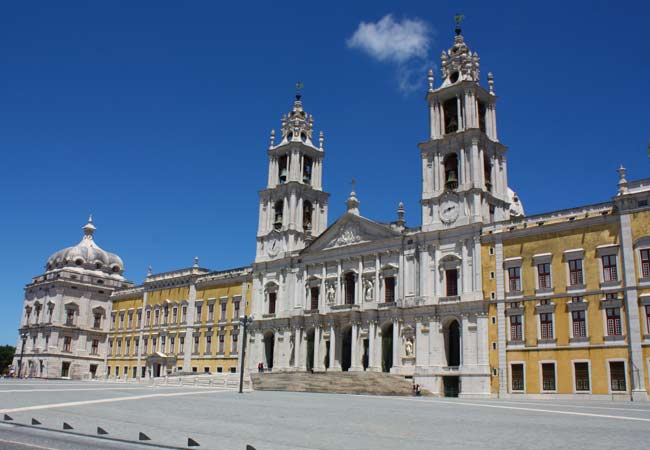
A visit leads through a fraction of its 1,200 opulent rooms, from the royal apartments to the magnificent basilica. The undisputed highlight is the spectacular Rococo library, a 90-metre-long hall whose 36,000 ancient books are famously protected from insects by a resident colony of bats.
While the palace is the primary draw, Mafra offers a straightforward and highly rewarding day trip from Lisbon. Its proximity to the charming coastal town of Ericeira allows for a popular two-part excursion, providing a welcome alternative to the summer crowds of Sintra.
This guide will provide everything you need to discover Mafra, helping you make the most of your time in this monumental destination.
What are the highlights of Mafra?
The 90-meter-long library, which is regraded as one of the finest libraries in the world
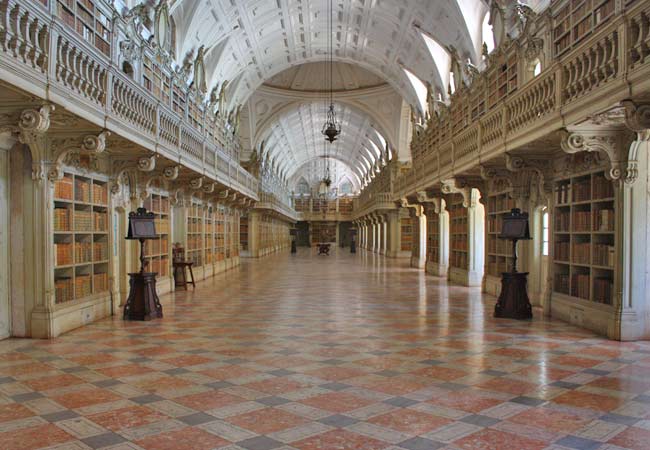
The beautiful baroque interior of the Basilica
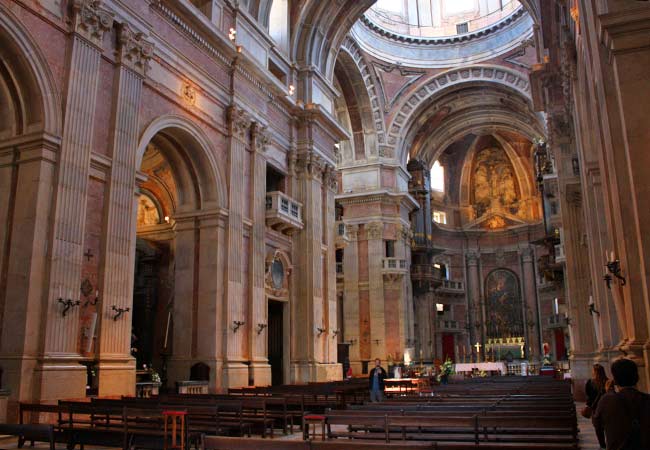
The luxuriant games room in the palace, which includes an early example of a pinball machine.
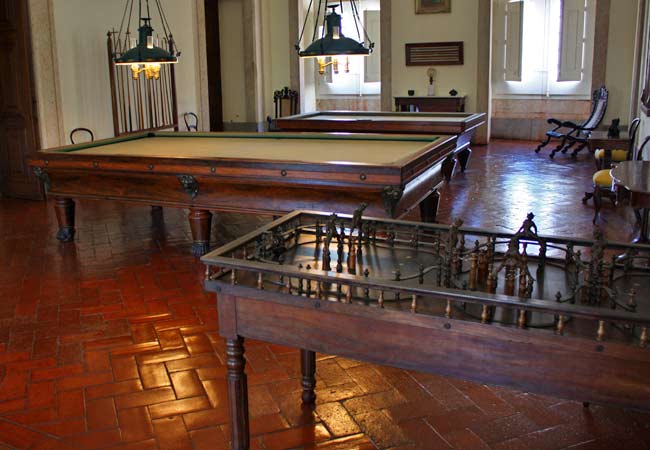
The Palacio de Mafra, Portugal
The palace is the main (and only) tourist attraction of Mafra, and the huge building completely dwarfs the rest of the town. The front façade of the palace extends for over 250 meters while the two bell towers, containing 92 bells, stands high above the town at 68 meters.
The place was constructed between 1717 and 1755 and was used as both a convent and royal residence. Inside there are over 1,200 rooms connected by over 150 flights of stairs, but only a small portion of the rooms are open to the public. This "small portion" will still have you walking over 1.5km within the staterooms – the palace is simply massive!
The sections which can be visited include the convent's infirmary, the royal rooms and the stunning library. All of the rooms open for visitors have been lovingly restored and are filled with original furniture, artworks and historical objects. The palace is a wonderful building and an excellent tourist attraction.
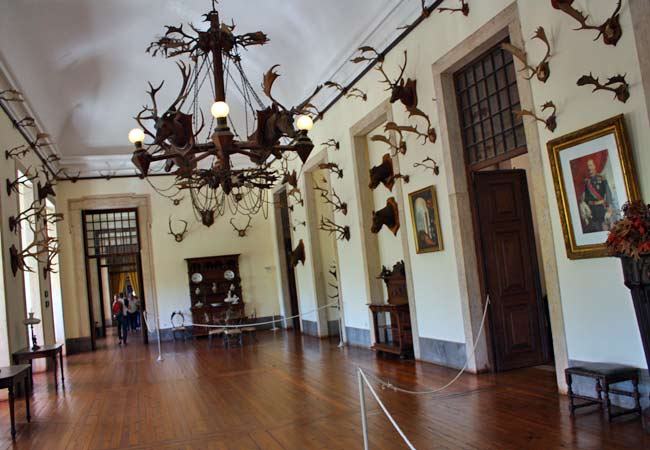
The hunting room in the Mafra palace
Have you considered a small group tour?
An organised tour is a great way to discover Mafra. Tours in Portugal tend to be of a high standard, with knowledgeable guides, and are a great way to meet fellow travellers. A selection of the best tours offered by GetYourGuide.com that include Mafra are:
• Mafra Palace and coastal villages small group tour (€70)
• Queluz, Mafra, Azenhas do Mar - private tour
• Mafra and Ericeira - private tour
Some interesting facts about the Palacio de Mafra
The 40-year construction of the palace had an average of 15,000 workers working on the site at any time, which reached a maximum of 25,000. To order within the workers, 1/10th of the Portuguese army (8,000 soldiers) was based on the construction site.
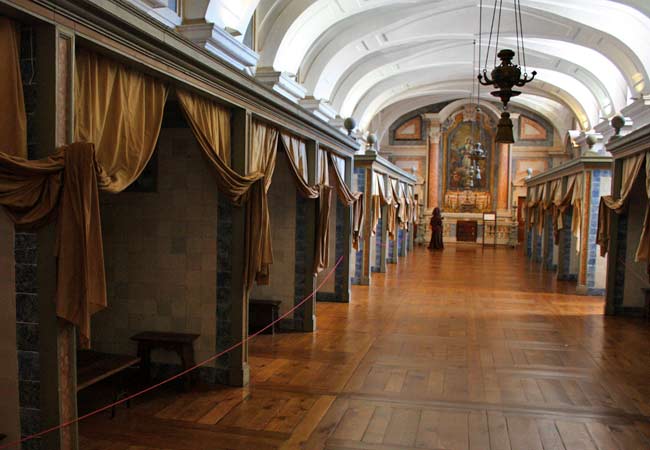
All the beds in the infirmary face the alter so the ill monks could attend mass while in bed
The initial project was for a convent large enough to house 13 Capuchin friars, but due to the influx of gold from Brazil, the building was vastly expanded, so that the final convent had sufficient space for 330 friars.
The original design of the convent had no staterooms, but it was converted into a palace so that it could become a hunting retreat for the king. It is 220 meters between the King's tower and the Queens tower and the room directly in the middle allowed the royal couple to observe church services without having to leave their royal quarters.
There is a colony of bats that live in the library and protect the ancient books from insect damage. These small bats are let out at night and can eat twice their weight in insects. This natural form of pest control has been in place for over 300 years.
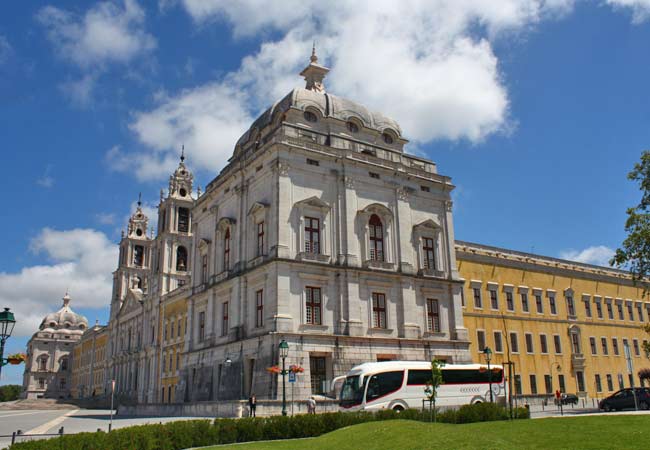
The Queen's tower of the palace
Mafra Palace Tourist Information
The entrance fee to the Palacio de Mafra costs €6.00 and is free for children under 12. The palace is open from 9:00-18:00 (last entrance at 17:00), Wednesdays to Mondays.
The palace is closed on Tuesdays, which is unique for Portugal as most government run tourist attractions are closed on Monday.
A typical visit to the palace lasts 90minutes and does involve a lot of walking. In each of the rooms, there are descriptions in Portuguese and English, and a leaflet guide can be purchased for €1.00.
Why build such a large Palace in Mafra?
Mafra palace was constructed by King John V (1689 –1750) in thanks for having a health heir, María Bárbara (later queen of Spain).
The king was married to Queen Mary Anne and had had three years of with no healthy children, so he vowed to construct a great monastery on the site of the ancient Mafra monastery if he was provided with an heir. The religious offering must have worked, as they went on to have a further six children.
The palace was funded by the immense wealth that followed from the 18th-century Portuguese colonies, but it's construction still almost bankrupted the state.
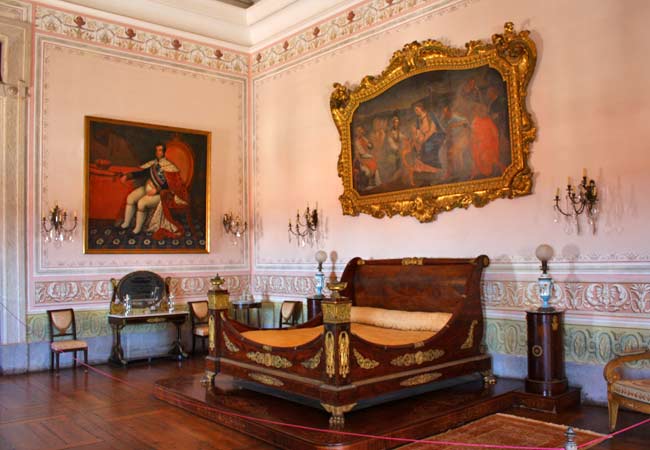
King John’s bedroom in the palace
What else is there to see in Mafra?
The main attraction of Mafra is the outstanding palace, and there are few other sights to extend a visit to Mafra.
To the rear of the palace are the peaceful Jardim do Cerco gardens, which provide formal gardens and shaded forested walks. Beyond the gardens is the Tapada Nacional de Mafra, the former hunting grounds of João V, which today are a nature park.
The town centre of Mafra is pretty, with a relaxed ambience and a good selection of restaurants and cafes, ideal for a long lunch.
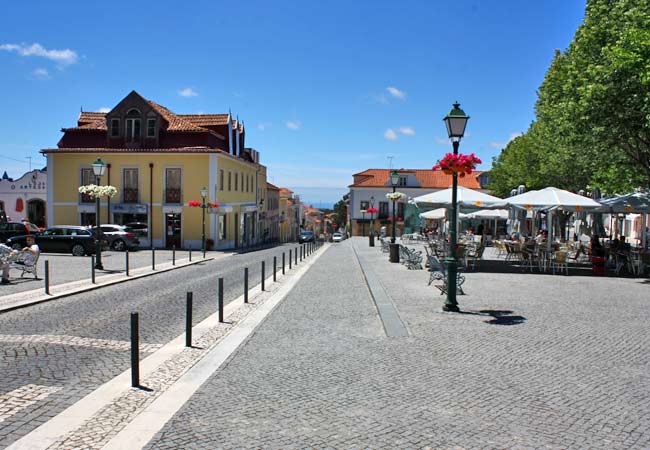
Mafra has a pleasant, relaxed town centre
A day trip to Mafra typically last around 2-3 hours, and we suggest combining it with Ericeira. Ericeira is a pretty coastal town which is famed for its surfing but as has a charming harbour and old quarter. Ericeira is only a 20minute bus ride from Mafra and is a continuation of the bus service from Lisbon to Mafra.
Related articles: Ericeira guide
Mafra, Obidos or Sintra as a day trip?
Sintra is the best day trip in the Lisbon region and should be visited before Mafra. Obidos is a charming walled town, but it is much smaller than Sintra. Both Obidos and Sintra get unbearably crowded with tourists during the summer months, while Mafra (and Ericeira) is much quieter.
Our recommended order for day trips from Lisbon are; Sintra, Cascais, Obidos, Mafra and Setubal. If you have a rental car include Sesimbra and the Serra da Arribida.
Related articles: Sintra guide - Obidos guide
Travel from Lisbon to Mafra
Lisbon is connected to Mafra by an inexpensive and regular bus service, operated by the Carris Metropolitana bus company. The bus departs Lisbon from the Campo Grande bus station, which is connected to the green and yellow metro lines.
The bus from Lisbon to Mafra, terminates at Ericeira (so the signage on the bus will state Ericeira) and the journey to Mafra takes 40 minutes. Tickets cost €4.50/€2.25 /€9.00 (adult/child/return) and tickets are purchased from the driver when boarding the bus. The latest timetable can be found on the Carris Metropolitana website:
www.
If you are driving to Mafra, there is a large free carpark to the south of the palace.
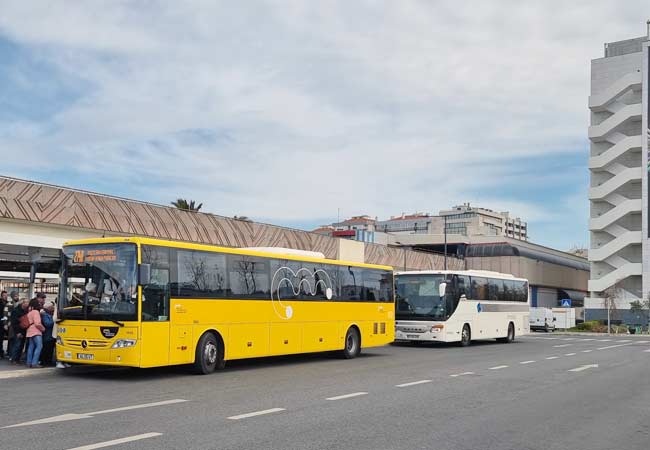
The Carris Metropolitana bus in Campo Grande bus station (Lisbon)
Discover more of central Portugal with our guides
If you've found our content valuable, we'd welcome your support.
The digital publishing landscape has evolved significantly. As a small independent publisher, we face growing challenges. Search engines increasingly favour paid content over organic results, while AI-generated content often reproduces original work without attribution.
To support our work, please consider bookmarking this page (press Ctrl + D) for quick access. If you find an article helpful, we'd be grateful if you'd share it with friends on social media.
For specific questions, please see our Reddit community at r/LisbonPortugalTravel.
Should you notice any outdated or incorrect information, please contact us at [email protected]
Thank you for helping us continue to provide valuable content in an increasingly challenging digital environment.



























